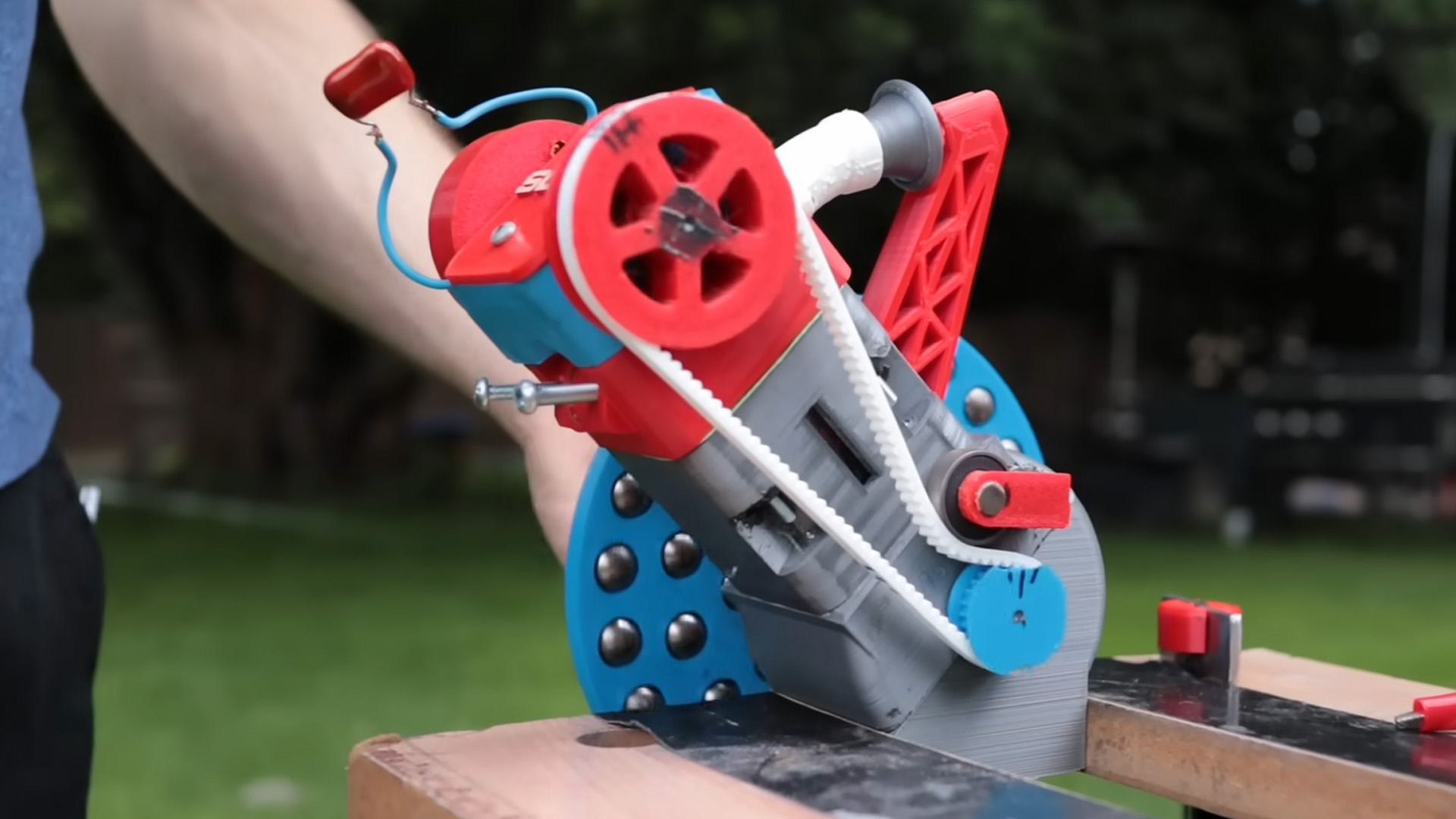

3D printing is a powerful tool for creating all kinds of stuff, but it has its limits. Hobbyist-focused machines that dispense melted plastic through a nozzle can only make parts that are so strong. Many tinkerers see that not as a constraint, but a challenge. One of them is YouTuber Camden Bowen, who decided to try and make a 3D-printed combustion engine.
He’s made engines before, but those were basically just pumps driven by compressed air. Combustion engines have to be self-running air pumps, which is where the fuel (in this case, butane) comes in. Just like any other common piston engine, Bowen’s compresses a fuel-air mixture, ignites it, exhausts, and then intakes more fuel.
Trying to 3D-print a combustion engine in plastic introduces all kinds of problems, though. You have to accept certain limitations of the technology right off the bat. The crankshaft, for instance, couldn’t be plastic. If that was possible, Harbor Freight would’ve done it already. The flywheel also needed some metal in it to be heavy enough, and short lengths of copper pipe stood in for valve seats. Other than that, J-B Weld was one of the few substances used in this engine that didn’t get extruded out of a 3D printer.

After some ignition trouble, the results are mixed. The engine does pop and bang a few times, but it doesn’t stay running at any point. It has a fair amount of compression and a solid ignition system, so the fuel system—a butane lighter held in front of the intake port—is likely the weak link here.
This is not the most ambitious plastic engine we’ve seen. The guys at the YouTube channel Garage54 previously cast an entire Lada engine block out of transparent resin, using a slew of other Lada parts to get the thing spinning. It did immediately explode after fuel and a spark were added, though.



I think the end condition for any plastic engine is bound to be combustion-induced death. There’s a reason why ICE engines are so powerful. Containing the energy from even a small explosion in a confined area like a cylinder is serious business. Even some metal ICE engines in production cars have seen issues like heads lifting off of blocks due to the pressure of combustion. Some earlier 20th-century engines had the head cast as a part of the block for this reason. To think that plastic, or even stronger injection-molded plastic, could withstand the force of combustion long enough to do anything useful is aspirational.
Trying does make for a good video, though. Exploring the ins and outs of internal combustion with the help of a 3D printer offers a great way to inform how and why engines work on a granular level. It’s something progressively fewer people seem to want or are able to learn about in detail, after all.
Got a tip? Send us a note: tips@thedrive.com